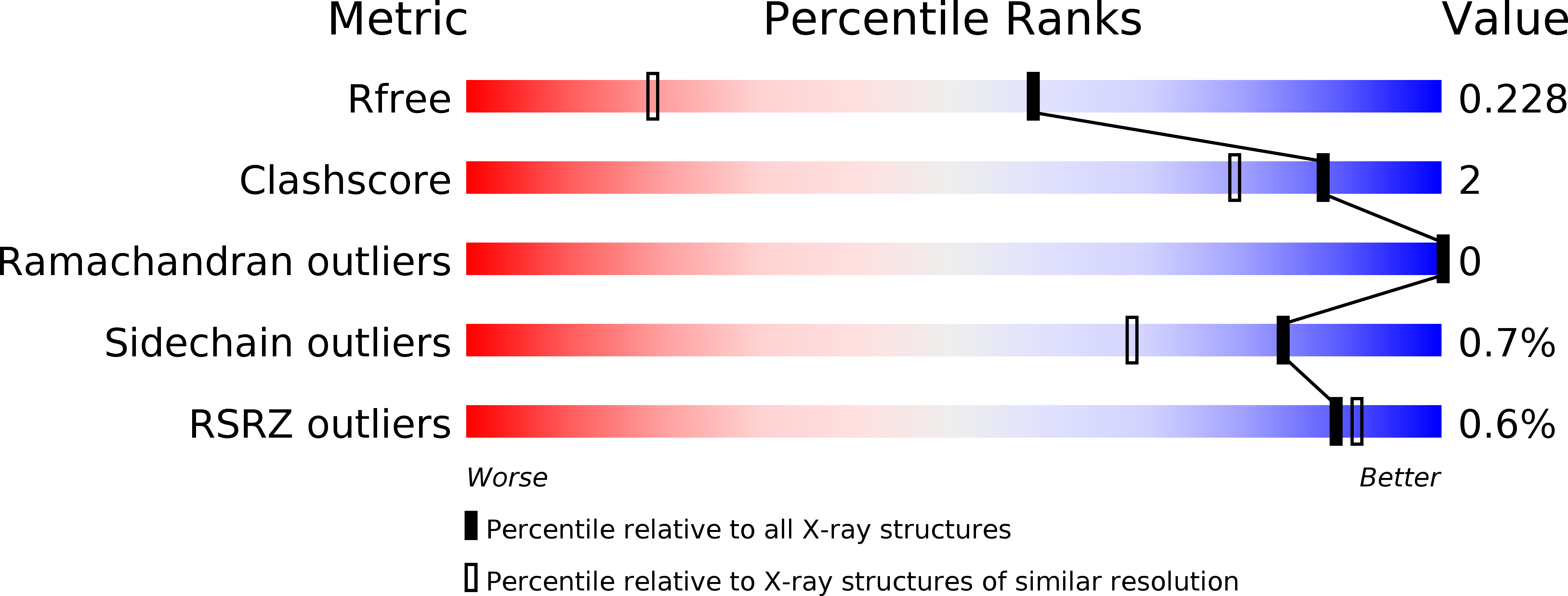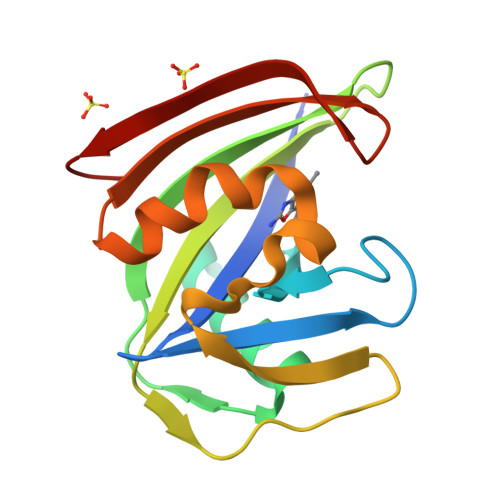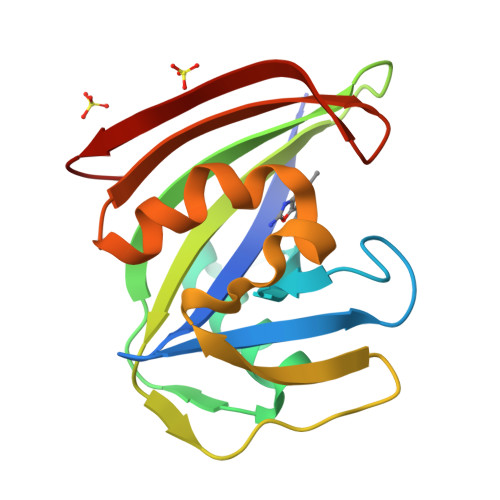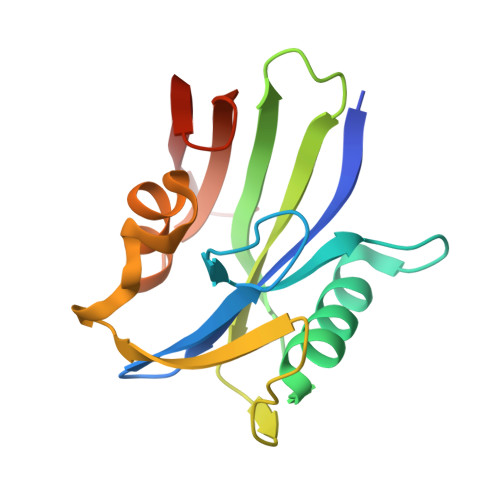Fragment-Based Discovery and Optimization of Enzyme Inhibitors by Docking of Commercial Chemical Space.
Rudling, A., Gustafsson, R., Almlof, I., Homan, E., Scobie, M., Warpman Berglund, U., Helleday, T., Stenmark, P., Carlsson, J.(2017) J Med Chem 60: 8160-8169
- PubMed: 28929756
- DOI: https://doi.org/10.1021/acs.jmedchem.7b01006
- Primary Citation of Related Structures:
5NGR, 5NGS, 5NGT - PubMed Abstract:
Fragment-based lead discovery has emerged as a leading drug development strategy for novel therapeutic targets. Although fragment-based drug discovery benefits immensely from access to atomic-resolution information, structure-based virtual screening has rarely been used to drive fragment discovery and optimization. Here, molecular docking of 0.3 million fragments to a crystal structure of cancer target MTH1 was performed. Twenty-two predicted fragment ligands, for which analogs could be acquired commercially, were experimentally evaluated. Five fragments inhibited MTH1 with IC 50 values ranging from 6 to 79 μM. Structure-based optimization guided by predicted binding modes and analogs from commercial chemical libraries yielded nanomolar inhibitors. Subsequently solved crystal structures confirmed binding modes predicted by docking for three scaffolds. Structure-guided exploration of commercial chemical space using molecular docking gives access to fragment libraries that are several orders of magnitude larger than those screened experimentally and can enable efficient optimization of hits to potent leads.
Organizational Affiliation:
Department of Biochemistry and Biophysics, Stockholm University , SE-106 91 Stockholm, Sweden.


















